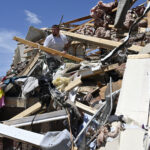A.M. Best Co. has affirmed the financial strength rating of A- (Excellent) of California Earthquake Authority (CEA) (Sacramento, CA). The rating outlook is stable.
The rating of CEA reflects its distinctive structure, which has been designed to guarantee the availability and actuarial soundness of residential earthquake insurance in California. The rating recognizes CEA’s excellent risk-adjusted capitalization, financial flexibility, extensive risk-modeling capabilities, sophisticated management practices and conservative investment policy. Despite partially offsetting risks tied to exposure concentration and the volatility inherent in the catastrophe insurance business, CEA appears positioned to cover policyholder obligations in a manner consistent with its A- (Excellent) rating.
CEA serves a unique role, ensuring that earthquake insurance coverage is available to residential property owners in California. CEA has excellent financial flexibility and risk protection derived from its unique financial structure, as well as its extensive reinsurance program. One aspect of that financial flexibility is CEA’s ability to assess its participating insurers up to an additional $3.6 billion, if needed, to pay claims for a catastrophic earthquake. In aggregate, CEA’s carefully planned structure provides for coverage of $6.7 billion to its policyholders, enough to cover a one in 850-year earthquake and still maintain capitalization supportive of its rating.
A.M. Best also views positively CEA’s exhaustive catastrophe modeling, sophisticated risk and financial management practices, as well as the stabilizing influence of its conservative investment strategy. These factors are critically important to the rating assignment, particularly given the specific risks inherent in CEA’s catastrophe insurance business activities.
Partially offsetting these strengths is the concentration of the company’s exposure to earthquake-related property losses in California and potential conflicts that could arise over time as a publicly managed insurer. Furthermore, A.M. Best notes that a relatively high degree of volatility remains fundamental to CEA’s business. Despite the extensive risk modeling, catastrophic loss forecasts carry no guarantee of their ultimate accuracy, and CEA’s operating history has yet to include any significant earthquake losses. As a public facility, CEA must accept all qualified properties, regardless of risk. This exposes CEA to the possibility of adverse risk selection and possible inadequate pricing on some policies it issues. However, studies by CEA and consulting actuaries have identified no adverse selection.
Was this article valuable?
Here are more articles you may enjoy.

 Citi Reverses Course on Firing of Japan Trader Five Years On
Citi Reverses Course on Firing of Japan Trader Five Years On  Central US Severe Weather Outbreak Caused Billions in Damages, AccuWeather Says
Central US Severe Weather Outbreak Caused Billions in Damages, AccuWeather Says  Will Workers’ Comp Benefit from ‘Most-Favored-Nation’ Drug Pricing?
Will Workers’ Comp Benefit from ‘Most-Favored-Nation’ Drug Pricing?  Cars Are Getting Smarter. Why It Matters for Claims Professionals
Cars Are Getting Smarter. Why It Matters for Claims Professionals 